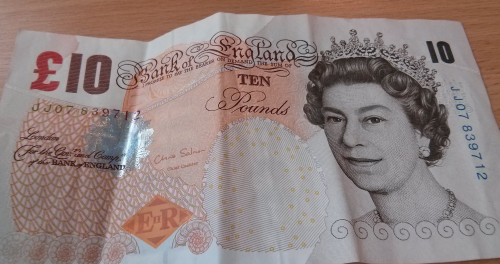Fractions, Percentages and Ratios (Business)
Fractions and Percentages
A percentage is a proportion of an amount, group or set and is out of $100$. Another way to think of this is as a fraction out of $100$. If you had an $80$% success rate, this would mean that for every $100$ attempts, $80$ of them would be a success.
A fraction is a proportion and is usually not a whole number. The form of a fraction is $\bigg(\dfrac{\text{numerator}}{\text{denominator}}\bigg)$. To simplify fractions, you need to look for a number which divides the numerator and denominator (also known as a common factor). Repeatedly divide both the numerator and denominator by common factors until they have no more factors in common. For example, to simplify $\dfrac{48}{18}$ you can see that $48$ and $18$ have a common factor of $6$, so divide by $6$ to get the simplified fraction $\dfrac{8}{3}$.
Click here for a look at more advanced information on fractions.
Converting Fractions to Percentages
To convert fractions to percentages divide the numerator (number on the top) by the denominator (number on the bottom) and multiply by $100$ this will give you the fraction as a percentage.
Calculating percentage changes
You calculate a percentage change when the amount of something you have changes. Use this method when you know the original value and the new value and you want to calculate the percentage change. For example, you can calculate the percentage change of stock sold each month.
Percentage increase:
If the amount you have increases, use the formula:
\begin{equation} \frac{\text{(new value} - \text{original value)}}{\text{original value}}\times100 = \text{ Percentage increase}. \end{equation}
Percentage decrease:
If the amount you have decreases, you manipulate the above formula to stop it being negative by reversing the numerator of the fraction:
\begin{equation} \frac{\text{(original value} - \text{new value )}}{\text{original value}}\times100 = \text {Percentage decrease}. \end{equation}
Using percentage change to calculate new amounts
This method is used when you know the percentage change and the original value and you want to calculate how much you now have. To do this use the formula:
\begin{equation} \frac{\text{(new percentage)}}{100}\times\text{(original value)} = \text{New amount}. \end{equation}
Worked Example 1
Worked Example
You have just sold one of your properties. When you bought it you paid $£500,000$. You sold it for a $19\%$ profit. You then had to pay $7\%$ commission.
How much money have you made?
Solution
Firstly, calculate the amount you sold the property for:
$\dfrac{£500,000}{100}\times 119 = £595000$. (This is equivalent to multiplying by $1.19$)
You then paid $7\%$ commission on the amount you sold the property for:
$\dfrac{£595,000}{100}\times 7 = £41,650$ commission. ( This is equivalent to multiplying by $0.07$)
In total, you have made:
$£595,000 - £41,650 = £553,350$.
Worked Example 2
Worked Example
Below is a table for the performances of your business for the first two quarters of year. If the sales continue to drop at the same rate for the next two quarters, how many sales will your business have made in the fourth quarter and how many in the entire year?
|
First Quarter |
Second Quarter |
|
|---|---|---|
|
Revenue |
£100,000 |
£76,500 |
|
Total Sales |
11,900 |
8,900 |
|
Total Costs |
£70,000 |
£72,000 |
Solution
Firstly, work out the percentage decrease from the first quarter to the second quarter. From the above formula, this is:

$\dfrac{11900-8900}{11900}\times100 = 25.21$% So there is a $25.21$% decrease in sales from the first quarter to the second. Hence, the second quarter sales are $100-25.21=74.79$% of the first quarter sales.
There are two ways in which you can calculate how many sales the company have by the end of the year:
1. We can calculate $74.79$% of $8900$ and do the same again to get the number of sales in the last quarter.
2. Or you can multiply $8900$ by $(0.7479)^2$ to get the sales for the last quarter. Note that you take $0.7479$ to the power $2$ as there are two more periods of this decrease.
Both methods are equivalent.
Method 1: $\dfrac{8900}{100}\times74.79 = 6656$ , rounded to the nearest whole number for the third quarter.
For the last quarter, assuming the same percentage decrease:
$\dfrac{6656}{100}\times 74.79 = 4978$ sales, rounded to the nearest whole number.
Method 2: $8900\times(0.7479)^2 = 4978$.
So if the current trend continues then in the final quarter of the year they will have made $4978$ sales.
To work out the total sales for the year you add all of the quarterly sales together:
$11900 + 8900 + 6656 + 4978 = 32434$ sales for the year if current trends continue.
Ratios
A ratio is a numeric relationship between two different quantities. A ratio is usually displayed using a colon '''' : ''''.
For example if the ratio of CEOs to managers to workers is $1:5:20$, this means for every one CEO there are $5$ managers and $20$ workers.
Converting ratios into fractions:
\begin{equation} \text{To convert the ratio A : B : C into fractions:} \frac{\text{A}}{(\text{A + B + C})} , \frac{\text{B}}{(\text{A + B + C})} , \frac {\text{C}}{(\text{A + B + C})}. \end{equation}
Test Yourself
Test yourself: Numbas test on fractions
Test yourself: Another Numbas test on fractions
Test yourself: Numbas test on percentages and money
Test yourself: Consumer mathematics
See Also
For more information on all of the topics in this section see our page on numerical reasoning.
Also try these workbooks (these are also very useful for numerical reasoning tests):